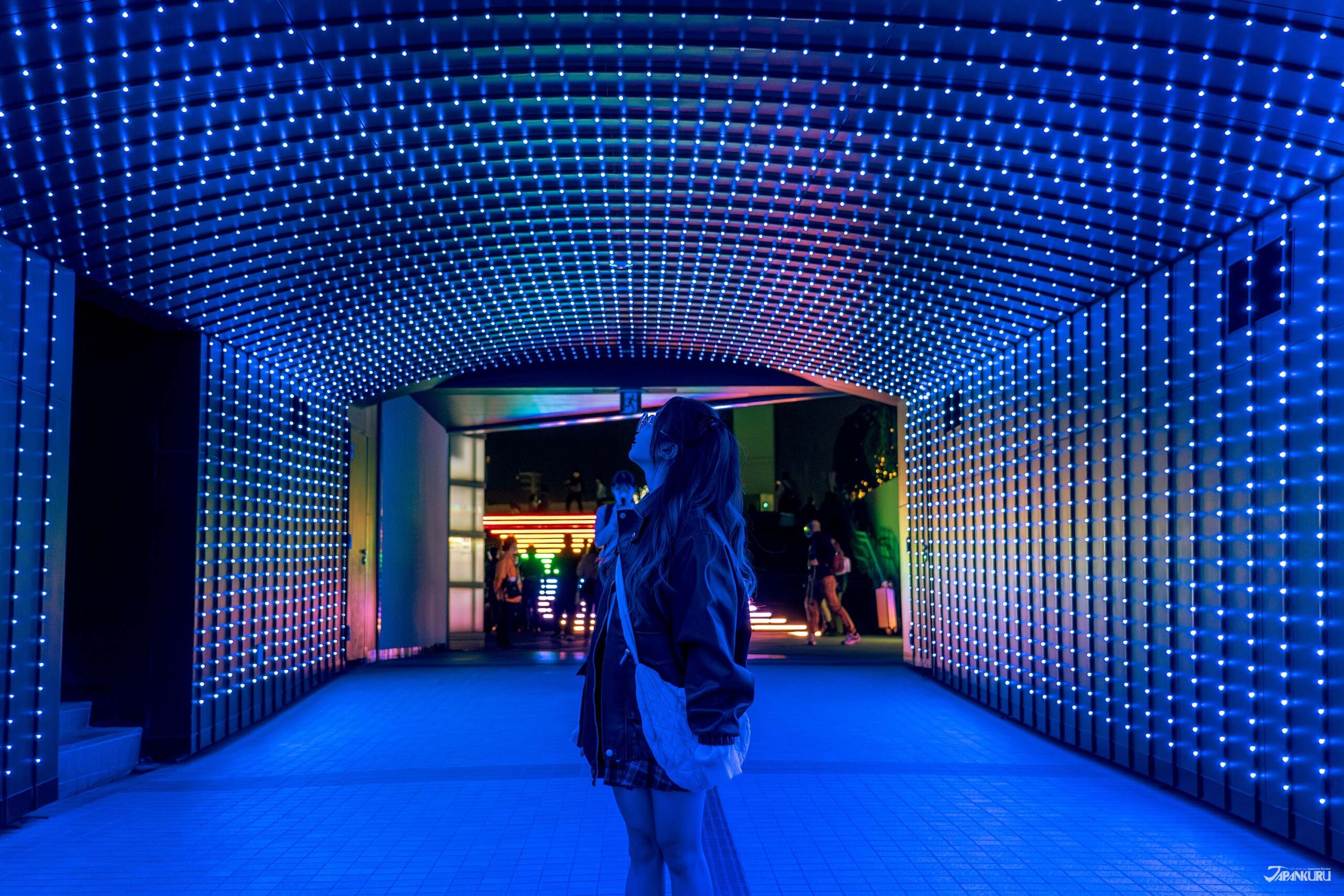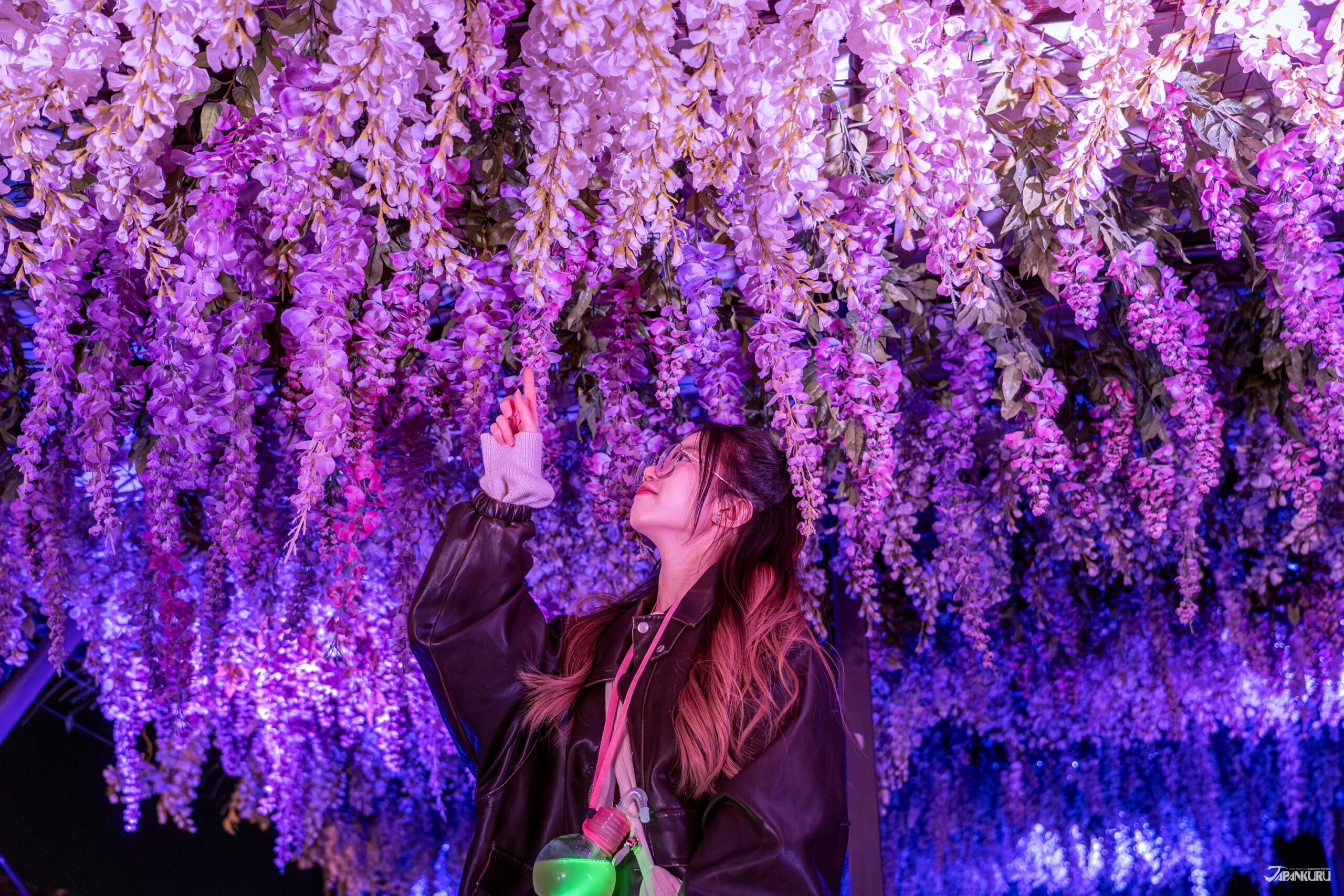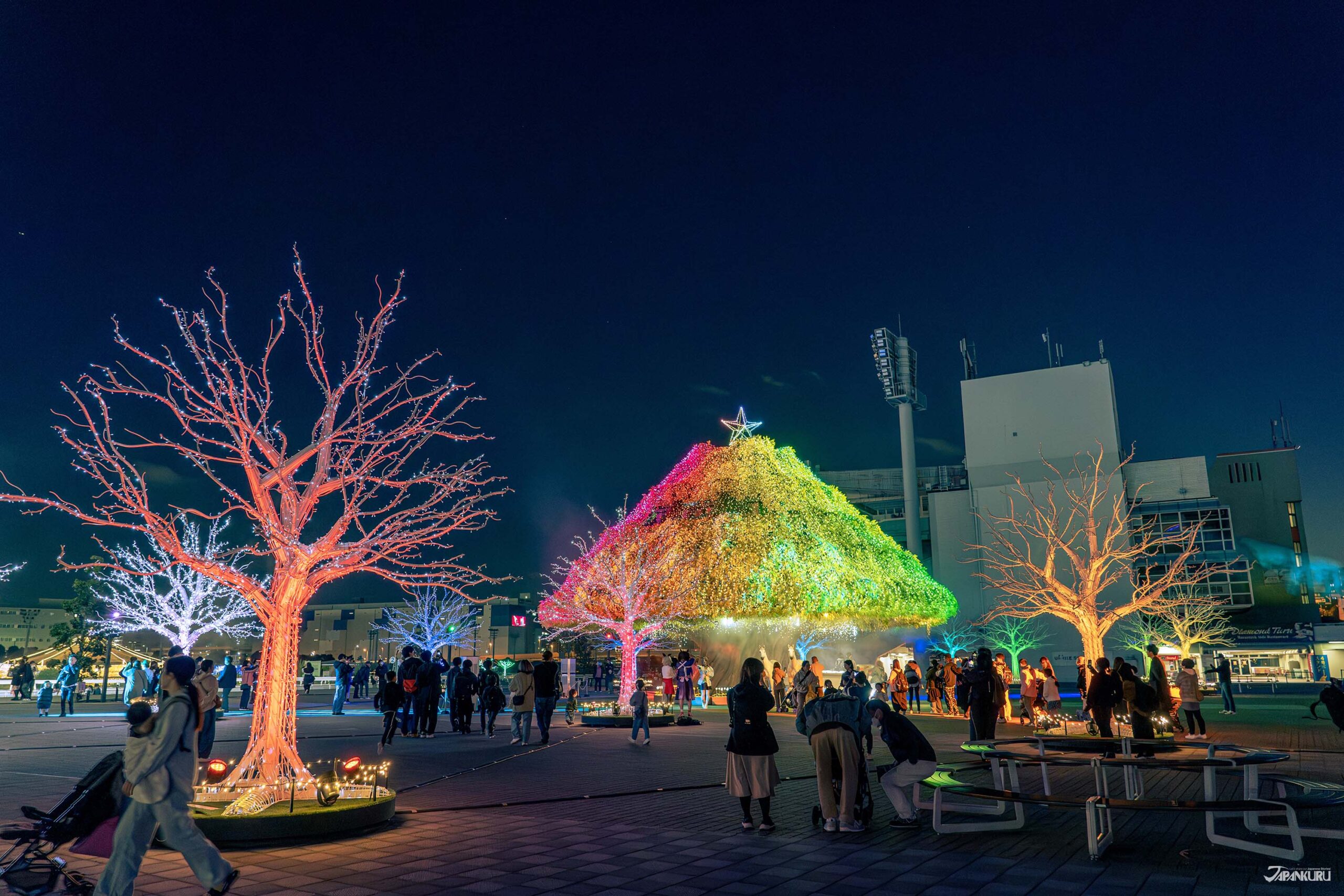
Tokyo Winter Recommendation: Don’t Miss Tokyo Mega Illumination, Japan’s #1 Light Show
This article contains sponsored content.
Brighten up your winter trip to Tokyo with Tokyo Mega Illumination (Tokyo Mega Illumi)! Get the perfect Tokyo winter travel itinerary with our favorite winter recommendations, and make the most of your trip with these highlights and insider tips for the best Tokyo illumination experience.
CONTENTS
A Tokyo Winter Must-See: Tokyo Mega Illumination

Tokyo is a fantastic travel destination year-round, but as winter approaches, the sparkling lights and crisp cold air make the city more dazzling than ever. Blessed with chilly winters that rarely get unbearably cold, there’s no better place to enjoy Japan’s famous illumination events than Tokyo, and our favorite yearly spectacular is Tokyo Mega Illumination at the Oi Racecourse (also known as the Tokyo Mega Illumi). Known throughout the year for horse races, flea markets, and other seasonal events, when the weather starts to turn cold this racetrack transforms into a winter wonderland. This year, you can check out their breathtaking festival of lights on non-race days from November 2, 2024 to January 12, 2025.
Recognized as Japan’s top illumination spot every year since 2020 (according to the major travel site Walker Plus), Tokyo Mega Illumination has become one of Tokyo’s must-see attractions. If you’re planning a winter trip to Tokyo, we think it’s worth adding to your itinerary. To prove it, let’s take a look at some of the best spots at Tokyo Mega Illumination – places you won’t want to miss during the 2024~2025 season!
Tokyo Mega Illumination (東京メガイルミ) 2024~2025
Oi Racecourse, 2-1-2 Katsushima, Shinagawa City, Tokyo
Event Period: November 2, 2024 ~ January 12, 2025
*Closed Nov 4~8, Dec 1~6, Dec 25~ Jan 1. End date may be subject to change.
Hours: 16:30 – 21:00 (final admission 20:00)
*Opening hours may vary depending on scheduled events or congestion, please check the official website for details.
Directions: 2 min. walk from Tokyo Monorail Oikeibajo-Mae Station, 12 min. walk from Keikyu Tachiaigawa Station
Ticket Pricing
Official Website (en)
Must-See Illumination Highlights
Spectacular Large-Scale Light Displays



True to its name, Tokyo Mega Illumination transforms the expansive Oi racing facility into a series of mega-sized light displays. One of the most impressive sights can be found at the racetrack’s fountain, which glows with beams of rainbow light during the famous synchronized fountain show. On weekends and holidays, the fountain also acts as a backdrop for a parade of the racecourse’s lead horses (guides and companions for the racehorses), adding an extra layer of entertainment.
Nearby, you can experience the Northern Lights in the middle of Tokyo! Colorful lights seem to color the sky all around you as you enter the magical illuminated woodland called the “Aurora Forest.” Then you can extend the fantasy with a stroll through the “Twinkle Tunnel East,” where the walls, ceilings, and floors come alive with projection-mapped art, creating a mesmerizing blend of music and lights.
Special Fountain & Lead Horse Show
Dates: Weekends & Dec 24, Jan 2, Jan 3
Times: 17:20 / 18:20
Traditional Japanese Landscapes, Imbued with Extra Sparkle



One of the most unique features of Tokyo Mega Illumination is the theme of traditional Japanese beauty, with multiple illumination zones themed around classic Japanese scenery. The “Japanese Countryside” area showcases vast rice fields made of light, capturing Japan’s love of the changing seasons. And if you’re feeling a little down about missing cherry blossom season, you can still experience the magic of Japan’s most iconic flowers within the 100-meter-long Edo Sakura Tunnel. Glowing cherry blossoms create a path through the dark of the evening, offering a surreal springtime in the midst of winter.



Next, explore a whimsical wisteria area full of dangling flowers to feel like you’ve walked right into a Japanese anime (look out for demons!), and slip through a tranquil bamboo forest to reach a glowing waterfall of lights. These displays combine massive scale with traditional aesthetics, creating an unforgettable artistic experience.
Photo Spots That Get All the Likes



Tokyo Mega Illumination is brimming with photo-worthy spots, to the point that you can basically pose anywhere for a great picture. But if you’re aiming for that one perfect snapshot, we have a few recommendations. If you want to play up the Tokyo Mega Illumination vibes, the Giant Tree is an eye-catching landmark, and the twinkling canopy is sure to draw attention. Take a seat in the “horse-drawn carriage” set up at the foot of the tree for a scene straight out of a fairytale! Or climb the Rainbow Grand Staircase to pose like Cinderella running from the ball. The striped rainbow effect of the staircase lights creates a magical backdrop, and you can experiment with photos from every angle until you take the perfect new profile pic.
Exciting Snacks to Satisfy All Ages




To add to the festive atmosphere, Tokyo Mega Illumination also has plenty of good things to eat, from popular treats to unique snacks only available at this event! Made in honor of Oi Racecourse’s horses, the horseshoe-shaped churros are always a favorite, and you can pair it with a drink in a cute glowing lightbulb cup, perfectly on-theme for this light-up event. If you want to try one of Tokyo’s famous crepes, you can also visit Marion Crepes, which started in Harajuku and now has a location at the racetrack! If you want something a little more substantial, there are steak sandwiches, pasta, and Japanese curry, and to wash it all down adults can enjoy Tokyo Mega Illumination’s original craft beer! If you’re hungry after a busy day exploring Tokyo, this is a unique way to do a Tokyo food tour – surrounded by sparkling lights!
Meet Tokyo’s Miniature Horses & Ponies

Tokyo Mega Illumination isn’t just one of the best places in Tokyo to enjoy a classic Japanese “illumination.” The event also takes advantage of its location at Oi Racecourse, adding horse-themed easter eggs throughout the displays, and offering special horsey events too. There are daily photo sessions with the horses, and on weekends and other special dates, you can go visit their paddock. Make the most of Tokyo Mega Illumination, and don’t leave before you meet their adorable miniature horses and ponies!
Don’t forget to check out the cute horse-themed merchandise either. Options include glowing candy (photographed together with the lightbulb drink above), small stuffed toys, light-up keychains, washi tape, handmade accessories, and more, any of which might be a fun and unexpected souvenir from your trip to Japan.
Tips for the Best Tokyo Illumination Experience

Before you head out and enjoy your time in Tokyo, we have a couple tips to help you make the most of your visit to Tokyo Mega Illumination. Perhaps the most important heads-up is this: you can get your tickets at a discount! While you certainly can buy day-of tickets on-site after you arrive, purchasing them in advance can save you up to 300 yen. Look for them on KKday to get the best price.
We know that there’s nothing more satisfying than having your travel plans go smoothly and fitting all kinds of fun activities into each day, and Tokyo Mega Illumination’s convenient location is a big help. Oi Racecourse is just 24 minutes from Haneda Airport via the Tokyo Monorail, so it’s actually a great stop for your first or last day in Tokyo, if you want to squeeze in one more activity! You can also make a day out of it by visiting some of the other attractions nearby. There’s a mall with plenty of good shopping and dining options right across the street, called Wira Ooi, and Shinagawa Aquarium is a little over 10 minutes away on foot!
If you’re planning a Tokyo trip this winter, don’t miss this chance to visit Tokyo Mega Illumination. Spend an evening taking pictures, petting horses, and soaking up the magical atmosphere at this exclusive winter experience!
For more info and updates from Japan, check Japankuru for new articles, and don’t forget to follow us on X (Twitter), Instagram, and Facebook!





 >> Find out more at Japankuru.com! (link in bio)
#
>> Find out more at Japankuru.com! (link in bio)
#





 The Robot Restaurant is gone, but the Samurai Restaurant is here to take its place. Check it out, and don't forget your coupon!
The Robot Restaurant is gone, but the Samurai Restaurant is here to take its place. Check it out, and don't forget your coupon!
 신주쿠의 명소 로봇 레스토랑이 사무라이 레스토랑으로 부활! 절찬 쿠폰 발급중
신주쿠의 명소 로봇 레스토랑이 사무라이 레스토랑으로 부활! 절찬 쿠폰 발급중
 18歲以上才能入場的歌舞秀,和你想的不一樣!拿好優惠券去看看~
#tokyo #shinjuku #samurairestaurant #robotrestaurant #tokyotrip #도쿄여행 #신주쿠 #사무라이레스토랑 #이색체험 #할인이벤트 #歌舞伎町 #東京景點 #武士餐廳 #日本表演 #日本文化體驗 #japankuru #japantrip #japantravel #japanlovers #japan_of_insta
18歲以上才能入場的歌舞秀,和你想的不一樣!拿好優惠券去看看~
#tokyo #shinjuku #samurairestaurant #robotrestaurant #tokyotrip #도쿄여행 #신주쿠 #사무라이레스토랑 #이색체험 #할인이벤트 #歌舞伎町 #東京景點 #武士餐廳 #日本表演 #日本文化體驗 #japankuru #japantrip #japantravel #japanlovers #japan_of_insta
 코지마 x 빅 카메라 쿠폰으로 일본 가전 제품 쇼핑하기
#pr #japankuru #japanshopping #kojima #biccamera #japaneseskincare #yaman #dji #osmopocket3 #skincaredevice #日本購物 #美容儀 #相機 #雅萌 #日本家電 #일본여행 #면세 #여행꿀팁 #일본쇼핑리스트 #쿠폰 #일본쇼핑 #일본브랜드 #할인 #코지마 #빅카메라 #japankurucoupon
코지마 x 빅 카메라 쿠폰으로 일본 가전 제품 쇼핑하기
#pr #japankuru #japanshopping #kojima #biccamera #japaneseskincare #yaman #dji #osmopocket3 #skincaredevice #日本購物 #美容儀 #相機 #雅萌 #日本家電 #일본여행 #면세 #여행꿀팁 #일본쇼핑리스트 #쿠폰 #일본쇼핑 #일본브랜드 #할인 #코지마 #빅카메라 #japankurucoupon























































